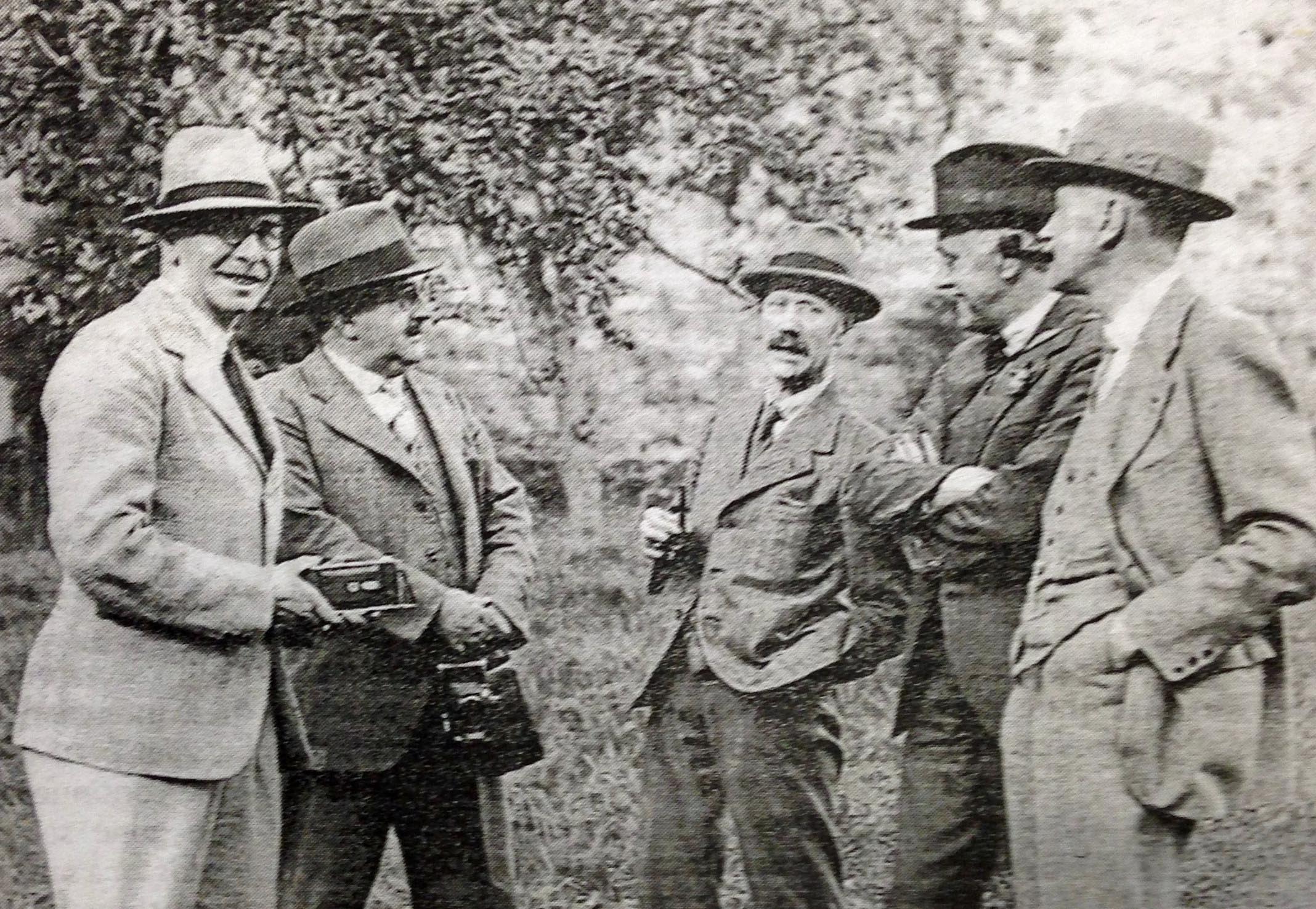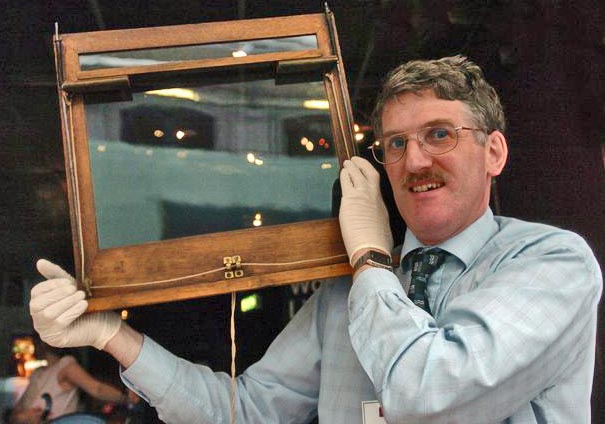When you next find yourself struggling to see through a rain-soaked windscreen, take a moment to thank Gladstone Adams, a brilliant mind from Heaton whose ingenuity made driving in bad weather safer for everyone. While he’s best known for inventing the windscreen wiper, Adams’ life was a remarkable blend of photography, military service, and community leadership. His story is one of resilience, creativity, and an unyielding drive to improve the world around him.
Adams (far left) at a meeting of Newcastle Photographic Society
A Humble Beginning in Heaton
Gladstone Adams was born on 16 May 1880 in Newcastle upon Tyne, the son of John and Agnes Adams. He was one of ten children, and the family lived in St Ann’s Row, Ouseburn, where life was far from easy. His father ran a marine salvage business, but financial struggles were a constant challenge. At 16, Gladstone faced a life-threatening bout of typhoid, an experience that shaped his determination to carve out a better future.
Rejecting the family trade, Gladstone pursued his passion for photography. He began his career as an apprentice to Matthew Auty, a well-known photographer in Tynemouth. By 1901, he was living at 29 Eversley Place, Heaton, with his parents and sister Grace. After the deaths of his father in 1902 and mother in 1909, Gladstone continued to build his life in Heaton, eventually settling at 39 Lesbury Road by 1907.
A Pioneering Photographer
In 1904, Gladstone Adams established his own photography business in Whitley Bay, quickly earning a reputation for his skill and artistry. His big break came in 1907 when he was commissioned to photograph the launch of the RMS Mauretania, a moment that not only earned him over £1,000 but also cemented his status as a leading photographer of his time.
By the 1920s, Gladstone’s business had expanded significantly, employing around 90 people across multiple studios. His work ranged from family portraits and wedding photography to commercial projects for newspapers and industrial organizations. He also served as the official photographer for Newcastle United, a role that would later inspire one of his most famous inventions.

The Birth of the Windscreen Wiper
In April 1908, Gladstone Adams found himself driving home from a Newcastle United match at Crystal Palace in his 1904 Darracq motor car. The journey was anything but pleasant—unseasonal snow and rain made visibility nearly impossible. Forced to stop repeatedly to clear his windscreen by hand, Gladstone had a stroke of genius: what if there were a device that could do this automatically?
Though Mary Anderson had patented a similaphr concept in the U.S. a few years earlier, Adams’ contribution was significant. After three years of development, he secured a patent for his windscreen wiper design in 1911. Today, the prototype of his invention is proudly displayed at Newcastle’s Discovery Museum, a testament to his innovative spirit.

A Life of Service: Military and Civic Contributions
Gladstone Adams’ talents extended far beyond photography and invention. In 1901, he joined the Northumberland Yeomanry, a local cavalry unit, where he honed his horsemanship skills and won several competitions. Though he narrowly missed being sent to the Boer War, he later served in World War I as a reconnaissance photographer with the Royal Flying Corps. One of his most notable assignments was photographing the deceased Red Baron, Manfred von Richthofen, to confirm his death.
During World War II, Gladstone once again answered the call to duty, serving as a Flight Lieutenant with the 1156 Air Training Corps in Whitley Bay. His commitment to service was unwavering, and his contributions were recognized with the permanent title of Captain upon his discharge.
A Creative Partnership: Marriage to Laura Annie Clark
In 1914, Gladstone married Laura Annie Clark, a talented artist and musician. Laura’s work as a miniature painter was exhibited at the Royal Academy and the Paris Salon, and she also worked as a colorist at Gladstone’s photography studio. The couple had one son, Dennis, and lived primarily in Monkseaton, where they built a life filled with creativity and community involvement.
A Legacy of Innovation and Leadership
Gladstone Adams was more than an inventor and photographer—he was a dedicated public servant. He served as a councillor for Whitley Bay and Northumberland County Council for decades, even sharing the role with his son Dennis at one point. His other inventions, including a fluorescent pedestrian belt and the trafficator (a precursor to modern car indicators), further demonstrated his commitment to improving everyday life.
Gladstone passed away on 28 July 1966, at the age of 86. Today, a commemorative plaque on the Ouseburn Mission building honors his life and contributions, ensuring that his legacy lives on in the community he loved.
Why Gladstone Adams’ Story Matters
Gladstone Adams was a true polymath—a photographer, inventor, soldier, and civic leader whose work touched countless lives. His windscreen wiper invention revolutionized driving safety, while his photography captured pivotal moments in history. His life serves as a reminder of the power of curiosity, resilience, and the desire to make a difference.
Key Takeaways
- Gladstone Adams invented the windscreen wiper after a challenging drive from a Newcastle United match.
- He was a pioneering photographer, capturing iconic moments like the launch of the RMS Mauretania.
- Adams served in both World Wars, contributing his skills as a reconnaissance photographer.
- His legacy includes numerous inventions and decades of civic leadership in Whitley Bay.
